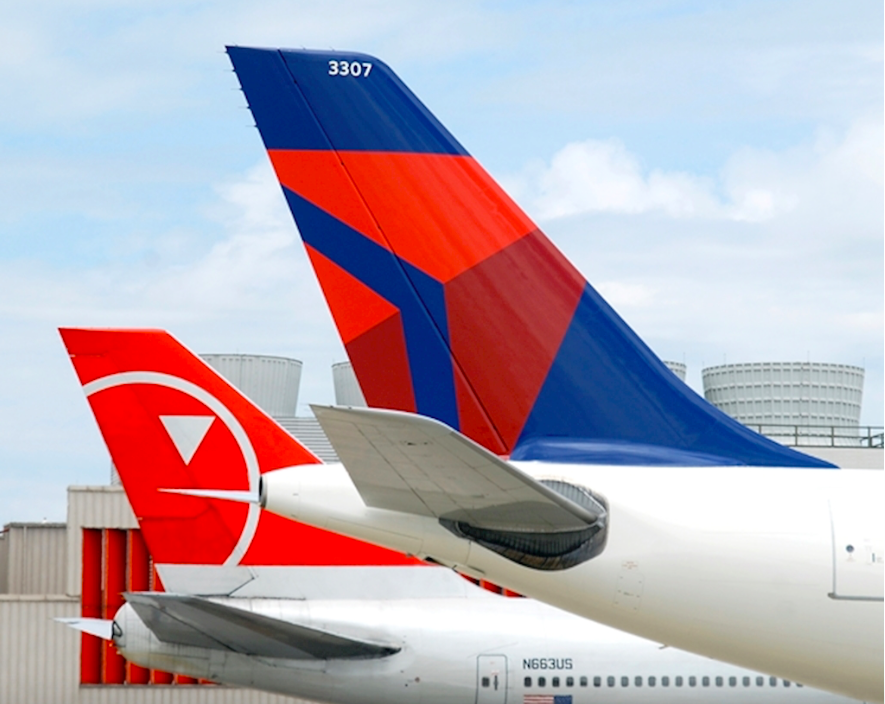Seth Kaplan has closely watched Delta and the airline industry for years, as Editor of Airline Weekly and co-author of the 2015 book, «Glory Lost and Found: How Delta Climbed from Despair to Dominance in the Post-9/11 Era.»
In an interview on the eve of the merger’s 10th anniversary, Kaplan discussed why the Delta-Northwest merger worked and how it contributed to Delta becoming the foremost U.S. airline.
DNH: How do you think the Delta-Northwest merger fits into the history of Delta, and of the industry?
SK: Historically, airline mergers didn’t go very well. Usually they were a mess for customers and bad for employee relations, and they didn’t even succeed financially.US Airways-America West in 2005 proved that mergers could be financially successful, but that one was an operational mess, leaving unhappy customers and employees. Delta-Northwest was really the first merger that was not only a financial success but also went well for customers and employees.
With mergers in any industry, you usually hear, «We’re going to take the best of both companies.» That’s easy to say but it’s hard to do. In this case, they really did it.
Northwest represented a shrewd strategic player and a fierce competitor. Delta had good employee and customer relations but struggled financially. The merger managed to take the competitive approach of Northwest and blend it with Delta’s focus on employees and customers to create a great airline.
DNH: Why do you think Delta-Northwest was successful?
SK: Delta had the advantage of learning from previous mergers, and they did a good job of avoiding a lot of the pitfalls. For example, the IT integration of two companies is always a big challenge. All things being equal, you want to use the systems of the larger airline as the foundation. It just makes sense: which is easier, to convert two-thirds of your systems or one-third? But that’s something other mergers got wrong. Delta got that right. Even in areas where Northwest had the slightly better technology, Delta started with its own systems and I think that was the right call.
And as I mentioned earlier, the two airlines complemented each other – definitely in terms of their networks. There was the strong Asia Pacific presence Delta gained from Northwest, even if some of the gains from the Northwest hub at (Tokyo) Narita haven’t turned out as planned.
Of course, Delta did have some structural advantages going into the merger – being in Atlanta operating the world’s largest hub, and having a well-positioned, flexible workforce without a lot of labor strife.
DNH: What were the biggest things the combined Delta gained from the merger?
Obviously, those really strong hubs in the Upper Midwest: Detroit and Minneapolis. They’ve been key to Delta’s success in the past 10 years. Also, you would have to say Delta’s (international) joint venture strategy started with Northwest and KLM. Today Delta’s JVs are the deepest in the industry, they work very well, with true profit, revenue and cost sharing. Northwest really pioneered that with KLM and was always very good at launching any partnership. Delta has built on that legacy.Stepping back, the merger did help set up Delta for success. You had two airlines coming out of bankruptcy and there had to be some type of consolidation in the industry. It was not a foregone conclusion that Delta would survive at that time. Now, you wonder if anybody in the (U.S.) industry can catch Delta, and I think it’s fair to say those competing airlines are better now because of what Delta has done.
If you were going to start an airline from scratch, the current Delta is a lot like what it would look like. A lot of that has to do with the merger.
DNH: What about the impact on the industry?
Delta-Northwest started the latest round of consolidation, which has gotten the industry to a place of stability – where they have breathing room and can think for the long-term. It’s easy to forget that for Delta and Northwest and some of the others, survival was very much in question. So someone was either going to go out of business or merge. There were too many players for the industry to be sustainable for very long.
Now the U.S. airline industry looks more like other industries, with three or four dominant providers. It’s been a good outcome, balancing the interests of shareholders, consumers and employees.
For example, Delta is known today for its reliability. Previously, it didn’t have the money to invest in operations – it was just trying to get through the day.
While some markets are less competitive than they were back when the industry had an unsustainable number of airlines, airfares are still near all-time lows adjusted for inflation, even with rising fuel prices. When fuel spiked before consolidation, it pushed airlines into bankruptcy. Now, in part because of consolidation, they’re able to reduce capacity to help stabilize their revenues. That’s a lot better than flying dirty planes or furloughing employees. Now more wealth flows back into the airline, to employees and investors. That translates to nicer service and an industry that can sustain itself.




